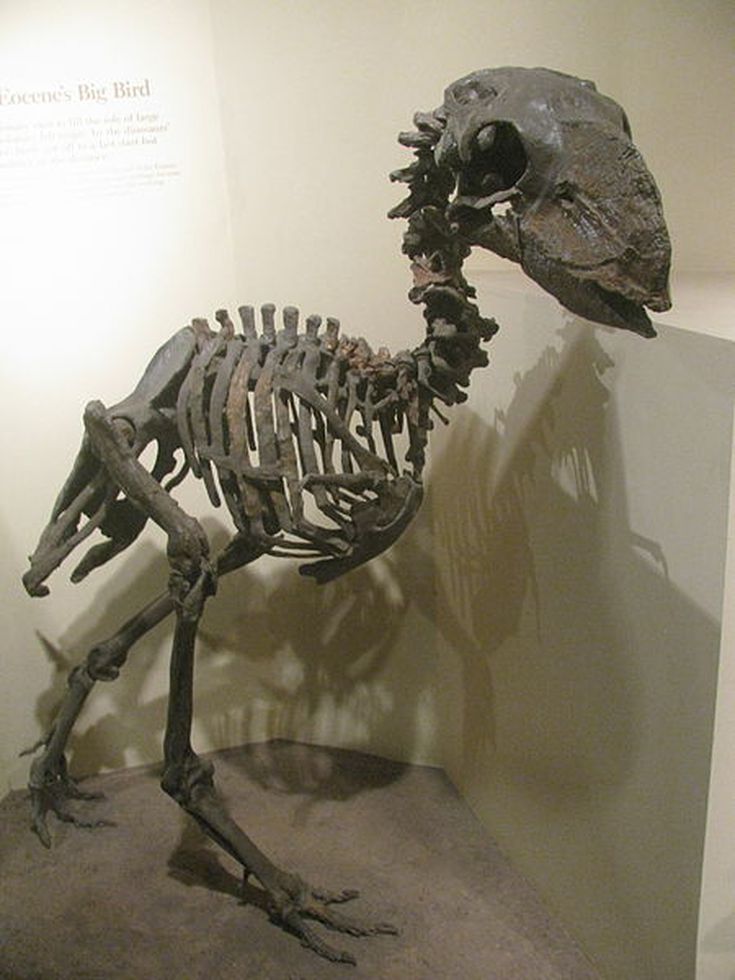Difference between revisions of "Gastornis"
(added irl section, fixed diet) |
m |
||
| Line 20: | Line 20: | ||
Her arms and legs have various bandages tied around them, and she wears brown sandals. | Her arms and legs have various bandages tied around them, and she wears brown sandals. | ||
Like other Friends, she has traits of the animal species she belonged to in her otherwise human body - that includes a large blue and red tail that belongs to the Gastornis animal, and since she is an avian, she has wings of the same color on her head. | Like other Friends, she has traits of the animal species she belonged to in her otherwise human body - that includes a large blue and red tail that belongs to the Gastornis animal, and since she is an avian, she has wings of the same color on her head. | ||
| − | |reallife=[[File:Gastornis_skeleton2.jpg|thumb|upright=1.0|left]] | + | |reallife=[[File:Gastornis_skeleton2.jpg|thumb|upright=1.0|left]]Gastornithidae was a family of large flightless bird species native to what is now Central Europe and the United States roughly 45-60 million years ago. All species were about 2 meter tall, flightless birds, similar to ostriches. It is unknown what kind of feathers they had, it is assumed they were hair-like similar to those of modern ratites, such as the emu or cassowary. Despite the similarities to modern large flightless birds, gastornis is more closely related to small waterfowl such as ducks, geese and swans. Their underdeveloped wings assumedly didn't have much purpose besides being used as a mating display. |
For decades since it's initial discovery, gastornis was assumed to be a carnivore due to its large, strong beak. However, the beak did not have a hooked tip which is very common in other meat eating birds as it helps in killing prey and tearing off meat. Gastornis is also lacking sharp, curved talons unlike other birds of prey. Instead, the beak would be used to crush seeds or fruits with hard shells. To prove this theory, scientists have analyzed dietary clues in the birds preserved bones and carbon isotopes and compared it with other herbivores from the same time period and modern birds of prey. | For decades since it's initial discovery, gastornis was assumed to be a carnivore due to its large, strong beak. However, the beak did not have a hooked tip which is very common in other meat eating birds as it helps in killing prey and tearing off meat. Gastornis is also lacking sharp, curved talons unlike other birds of prey. Instead, the beak would be used to crush seeds or fruits with hard shells. To prove this theory, scientists have analyzed dietary clues in the birds preserved bones and carbon isotopes and compared it with other herbivores from the same time period and modern birds of prey. | ||
Revision as of 21:29, 16 January 2018
| Gastornis | ||||||||||||
|---|---|---|---|---|---|---|---|---|---|---|---|---|
| Character Data | ||||||||||||
| ||||||||||||
| Animal Data | ||||||||||||
|
| Gastornis | Festival | Pavilion | KF3 | Nexon Game | Stage Play | Gallery |
The Gastornis is a type of Friend that appeared in the original Kemono Friends mobile game.
Appearance
Gastornis has red hair that fades into a darker tone at the tips - part of it is tied at the front with green pearls, and she has a massive curled bang that's beige in coloration and black at thet ip - that represents the beak of a Gastornis. She also has a headband with an oval orange section at the ends, meant to represent the eyes of a Gastornis. She has yellow irides with no highlights, signifying her animal species is extinct. She has a large red furred collar tied by a ribbon of similar coloration - this ribbon fades into yellow at the tips. Below is a white sleeveless shirt, followed by a brown corset and an armored skirt of the same color with iron buttons. It has a furred end. Her arms and legs have various bandages tied around them, and she wears brown sandals. Like other Friends, she has traits of the animal species she belonged to in her otherwise human body - that includes a large blue and red tail that belongs to the Gastornis animal, and since she is an avian, she has wings of the same color on her head.
Series Appearances
| Media | Role | |
|---|---|---|
In Real Life
Gastornithidae was a family of large flightless bird species native to what is now Central Europe and the United States roughly 45-60 million years ago. All species were about 2 meter tall, flightless birds, similar to ostriches. It is unknown what kind of feathers they had, it is assumed they were hair-like similar to those of modern ratites, such as the emu or cassowary. Despite the similarities to modern large flightless birds, gastornis is more closely related to small waterfowl such as ducks, geese and swans. Their underdeveloped wings assumedly didn't have much purpose besides being used as a mating display.
For decades since it's initial discovery, gastornis was assumed to be a carnivore due to its large, strong beak. However, the beak did not have a hooked tip which is very common in other meat eating birds as it helps in killing prey and tearing off meat. Gastornis is also lacking sharp, curved talons unlike other birds of prey. Instead, the beak would be used to crush seeds or fruits with hard shells. To prove this theory, scientists have analyzed dietary clues in the birds preserved bones and carbon isotopes and compared it with other herbivores from the same time period and modern birds of prey.
The reasons for gastornis' extinction are unknown but believed to be either increasing competition with mammals or more likely, climate change.
References
in-depth article about gastornis' diet http://phenomena.nationalgeographic.com/2014/02/27/giant-prehistoric-bird-crushed-seeds-not-little-horses/

